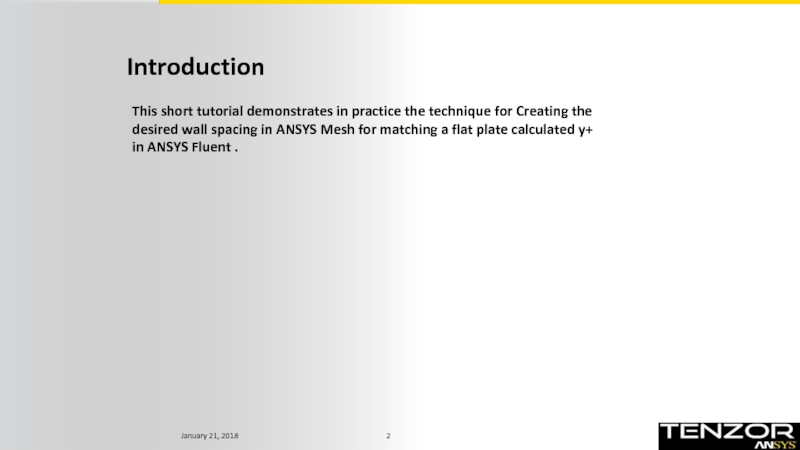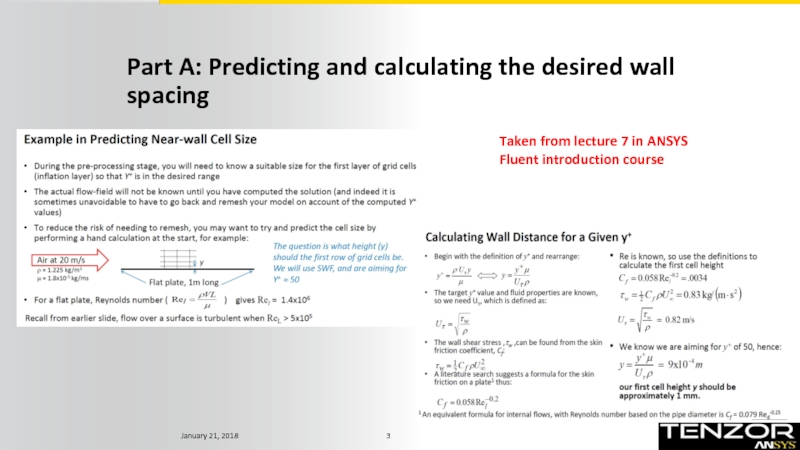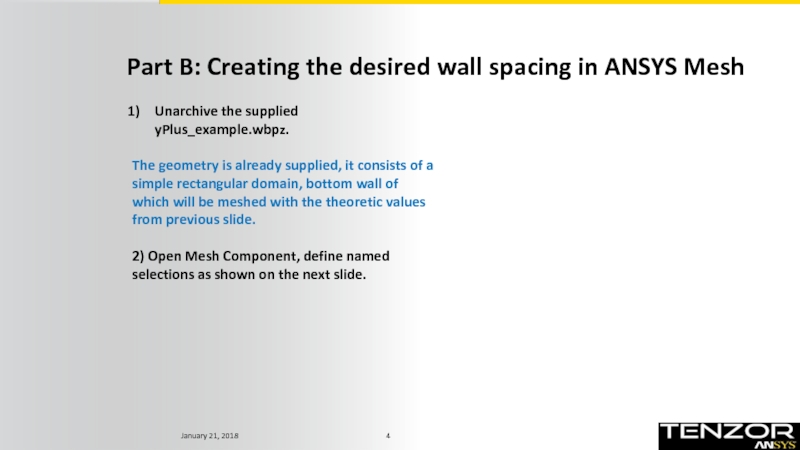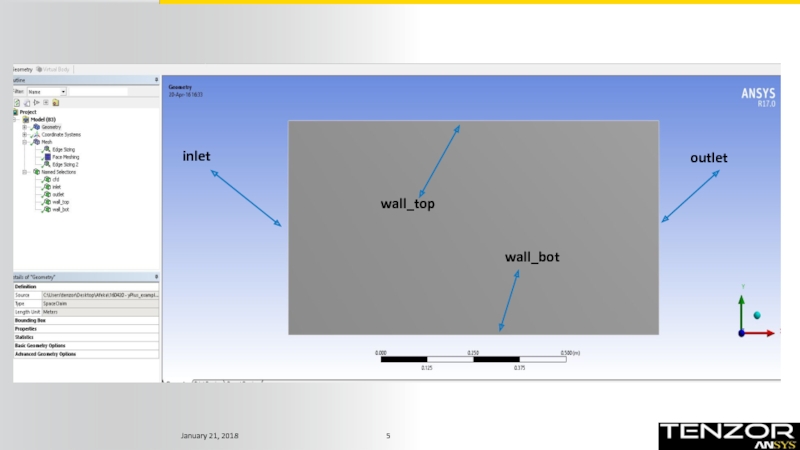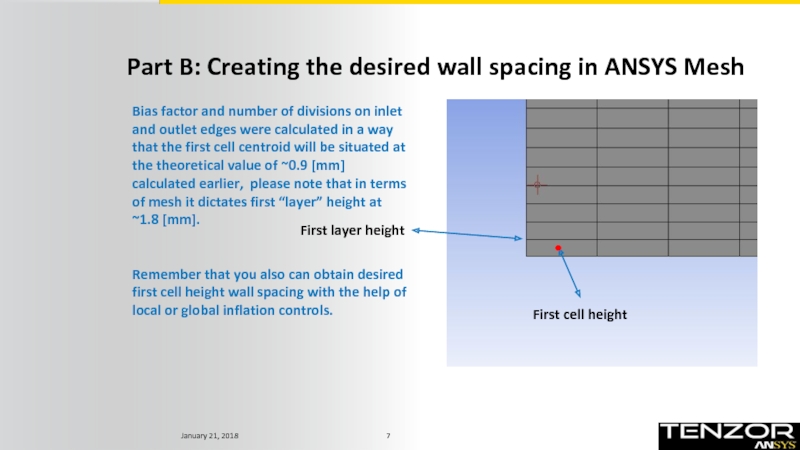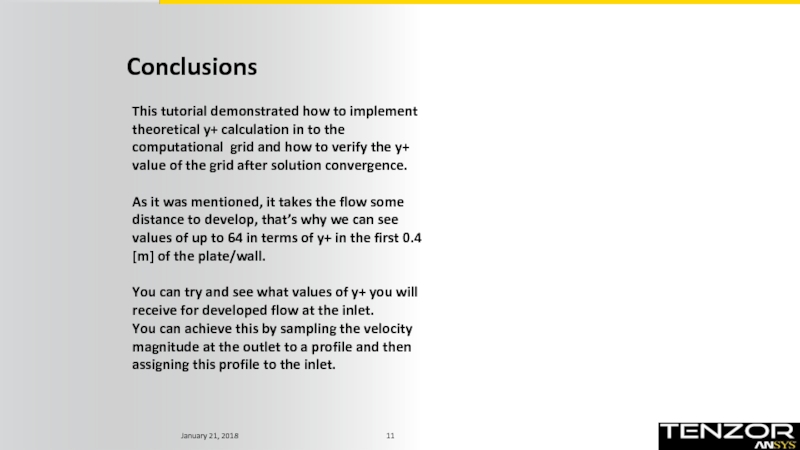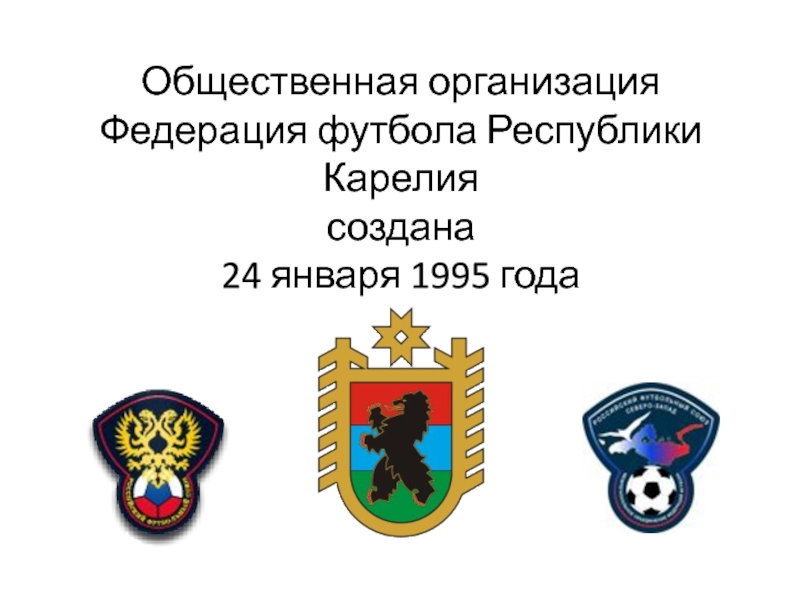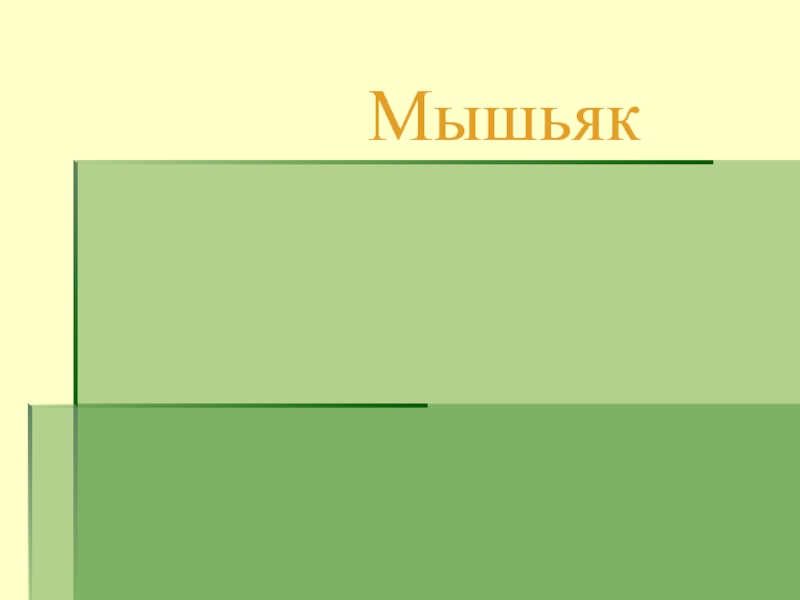- Главная
- Разное
- Дизайн
- Бизнес и предпринимательство
- Аналитика
- Образование
- Развлечения
- Красота и здоровье
- Финансы
- Государство
- Путешествия
- Спорт
- Недвижимость
- Армия
- Графика
- Культурология
- Еда и кулинария
- Лингвистика
- Английский язык
- Астрономия
- Алгебра
- Биология
- География
- Детские презентации
- Информатика
- История
- Литература
- Маркетинг
- Математика
- Медицина
- Менеджмент
- Музыка
- МХК
- Немецкий язык
- ОБЖ
- Обществознание
- Окружающий мир
- Педагогика
- Русский язык
- Технология
- Физика
- Философия
- Химия
- Шаблоны, картинки для презентаций
- Экология
- Экономика
- Юриспруденция
Mesh Creation According to Predicted y+ презентация
Содержание
- 1. Mesh Creation According to Predicted y+
- 2. Introduction This short tutorial demonstrates in practice
- 3. Part A: Predicting and calculating the desired
- 4. Part B: Creating the desired wall spacing
- 5. wall_top wall_bot inlet outlet
- 6. Part B: Creating the desired wall spacing
- 7. Part B: Creating the desired wall spacing
- 8. Part B: Creating the desired wall spacing
- 9. Part C: Fluent Setup Close ANSYS Mesh,
- 10. Part C: Fluent Setup The final step
- 11. Conclusions This tutorial demonstrated how to implement
Слайд 2Introduction
This short tutorial demonstrates in practice the technique for Creating the
Слайд 3Part A: Predicting and calculating the desired wall spacing
Taken from lecture
Слайд 4Part B: Creating the desired wall spacing in ANSYS Mesh
Unarchive the
The geometry is already supplied, it consists of a simple rectangular domain, bottom wall of which will be meshed with the theoretic values from previous slide.
2) Open Mesh Component, define named selections as shown on the next slide.
Слайд 6Part B: Creating the desired wall spacing in ANSYS Mesh
Select wall_top
Define sizing parameters as shown, these parameters will ensure that the stream wise aspect ratio of the near wall region cells will not exceed 5
Select inlet and outlet edges, right click -> insert -> sizing.
Define sizing parameters as shown.
When applying bias please note that one of the edges (inlet or outlet) will have to be reversed.
Слайд 7Part B: Creating the desired wall spacing in ANSYS Mesh
Bias factor
Remember that you also can obtain desired first cell height wall spacing with the help of local or global inflation controls.
First layer height
First cell height
Слайд 8Part B: Creating the desired wall spacing in ANSYS Mesh
Select the
This is done so that the resulting mesh will be smooth and mapped.
Click “Generate Mesh” and observe the resulting mesh. You can zoom in, rotate and use the ruler on the screen in order to verify the height of the first cell.
Resulting first layer height is approx. 1.8 [mm], which correspond to first cell height of 0.9 [mm], which both correspond to the desired y+ of 50.
Слайд 9Part C: Fluent Setup
Close ANSYS Mesh, connect it to a new
Update Mesh component if necessary.
Open Fluent setup in with double precision option.
Models -> Viscous -> K-Epsilon.
Boundary conditions -> Inlet
Solution initialization -> hybrid -> Initialize.
Run calculation -> 100 Iterations -> Calculate.
The run should converge after ~40 iterations.
Слайд 10Part C: Fluent Setup
The final step of this tutorial will be
Results -> Plots -> XY Plot.
Set the parameters as shown and click plot.
Observe the y+ distribution next to wall_bot.
Please note that it takes about 0.4 [m] for the flow to develop and then we can see that we get the values that we expected from theoretical calculation.
Слайд 11Conclusions
This tutorial demonstrated how to implement theoretical y+ calculation in to
As it was mentioned, it takes the flow some distance to develop, that’s why we can see values of up to 64 in terms of y+ in the first 0.4 [m] of the plate/wall.
You can try and see what values of y+ you will receive for developed flow at the inlet.
You can achieve this by sampling the velocity magnitude at the outlet to a profile and then assigning this profile to the inlet.

